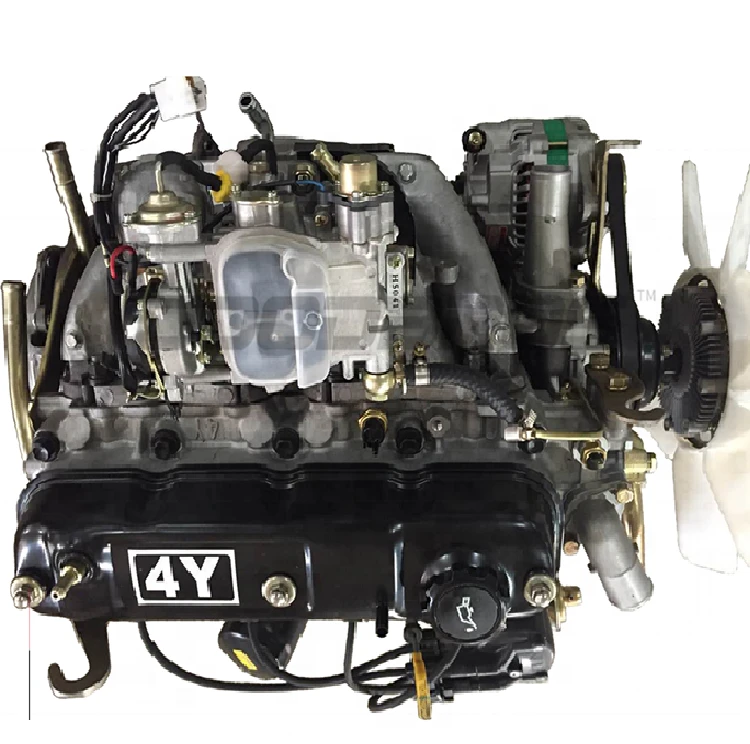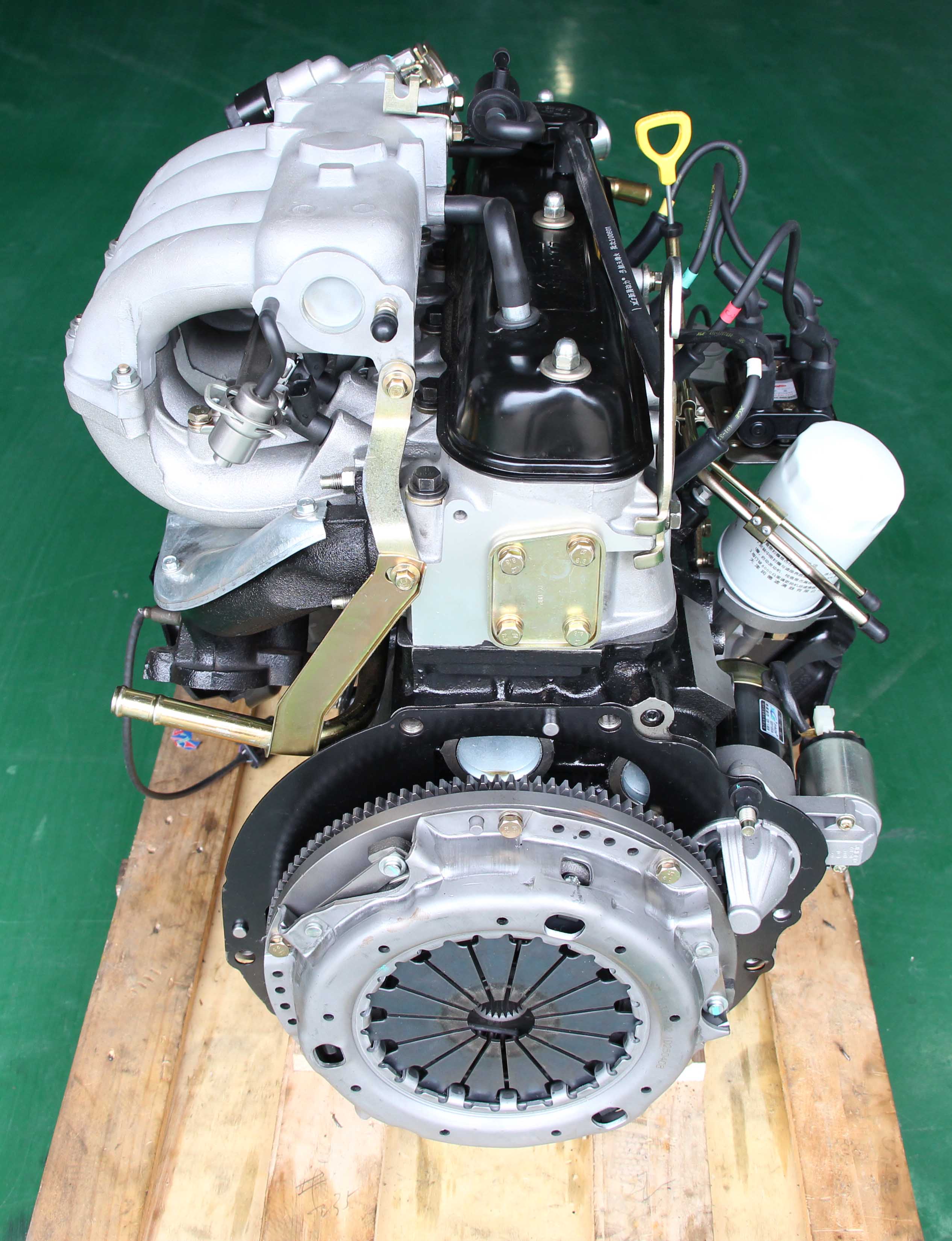The Best Maintenance Tips for Maximizing the Lifespan of Your 4Y Engine
The Best Maintenance Tips for Maximizing the Lifespan of Your 4Y Engine
Blog Article
Why the Engine Is the Ideal Option for Efficiency and Effectiveness in Your Automobile
The engine continues to be a pivotal component in automobile style, mostly due to its substantial impact on both efficiency and efficiency. As developments in innovation make it possible for smaller sized engines to supply impressive power while maximizing gas economy, the integration of functions such as turbocharging and hybrid systems ends up being progressively crucial.
Comprehending Engine Types
Comprehending the different types of engines is important for maximizing performance and performance in vehicle style. The primary engine types include interior combustion engines (ICE), electrical engines, and hybrid systems, each offering distinct benefits and restrictions.
Inner burning engines, which can be additional categorized right into fuel and diesel variations, depend on the combustion of gas to create power. Gas engines commonly supply higher RPMs and far better velocity, while diesel engines are known for their torque and gas effectiveness, making them optimal for heavy-duty applications.
Electric engines, on the various other hand, use electrical motors powered by batteries or gas cells. They use rapid torque distribution, leading to smooth acceleration and reduced emissions. The performance of electrical engines is substantially more than that of ICEs, making them a popular selection for eco-conscious consumers.
Crossbreed systems integrate both internal combustion and electrical engines, leveraging the staminas of both modern technologies. They enhance gas usage by utilizing electric power at reduced speeds and switching over to gas or diesel for greater speeds or heavier loads.
Selecting the right engine kind is important for attaining desired efficiency metrics and environmental sustainability in modern vehicle engineering.
The Impact of Engine Size
Engine size frequently plays a critical function in establishing a car's efficiency and performance. Generally measured in liters or cubic centimeters, engine size directly influences the power output and torque qualities of an automobile.
Nevertheless, raised engine dimension typically correlates with diminished gas effectiveness. Smaller engines can supply appropriate performance for day-to-day driving while advertising much better efficiency, making them a preferred option in compact and mid-size automobiles.
Additionally, advancements in engine style, such as turbocharging and direct gas injection, permit smaller engines to attain power degrees comparable to their bigger counterparts. This fad highlights the relevance of not exclusively focusing on engine dimension but additionally thinking about total automobile design and innovation (4y engine). Ultimately, the impact of engine size on performance and performance emphasizes the requirement for customers to assess their specific driving requirements and choices when choosing a car
Advanced Engine Technologies
Developments in engine technologies have significantly reshaped the landscape of automotive efficiency and effectiveness, structure upon the foundational ideas established by engine size. Significantly, innovations such as turbocharging and straight fuel injection have allowed smaller engines to supply power levels formerly linked with larger counterparts. Turbochargers compress air entering the engine, allowing for raised power output without an equivalent increase in engine size, while direct injection optimizes fuel delivery, enhancing combustion efficiency.
Additionally, variable valve timing systems have become an important modern technology, permitting engines to readjust shutoff procedure based upon driving conditions. This versatility enhances both performance during acceleration and gas performance throughout travelling. Hybrid and electric engine technologies even more illustrate the shift in automobile design, combining traditional inner burning engines with electric motors to maximize performance while lowering discharges.
Moreover, developments in materials scientific research have actually resulted in lighter, much more durable engine parts, additionally enhancing efficiency and long life. The integration of advanced electronic devices and engine control systems also permits for real-time modifications, guaranteeing optimum performance throughout different conditions. Jointly, these innovative engine innovations not just enhance vehicle efficiency but likewise add to a much more sustainable vehicle future, demonstrating the ongoing development of engine design.
Harmonizing Power and Effectiveness
Striking an equilibrium between power and performance is important in modern-day vehicle layout as manufacturers seek to satisfy significantly strict emissions regulations while pleasing website link customer demand for performance (4y engine). The difficulty depends on maximizing engine attributes to provide durable power result without giving up gas economy
To Visit Website achieve this equilibrium, designers utilize numerous techniques, such as turbocharging, which boosts engine power by compeling in more air, permitting a smaller sized engine displacement that improves fuel performance. Variable shutoff timing technologies likewise play a substantial role, making it possible for engines to readjust their efficiency qualities based upon driving problems, therefore enhancing both power and effectiveness.
Moreover, advancements in materials and manufacturing methods have actually caused lighter engine parts, which lower overall vehicle weight and improve fuel effectiveness without jeopardizing power. Hybrid technologies have also become a feasible option, integrating standard inner burning engines with electrical powertrains to supply an increase in performance while preserving lower emissions.

Future Trends in Engine Design

In addition, the development of innovative materials, such as light-weight composites and high-strength alloys, is readied to reinvent engine components. These products not just decrease weight yet also enhance thermal efficiency, consequently maximizing performance. In addition, manufacturers are checking out variable compression ratios, permitting engines to adjust to different driving conditions, boosting both power output and fuel economic situation.
Further, the increase of fabricated intelligence and artificial intelligence in engine design is enabling anticipating upkeep and real-time efficiency optimization. This technology can cause engines that self-adjust for optimal performance based on driving patterns.

Verdict
In conclusion, the engine serves as a crucial component in attaining optimal efficiency and performance in contemporary cars. The interplay in between engine dimension and style continues to develop, driving innovations that stabilize electrifying efficiency with environmental sustainability.
Additionally, innovations in engine style, such as turbocharging and direct fuel shot, enable smaller sized engines to attain power degrees comparable to their bigger counterparts.Developments in engine technologies have significantly improved the landscape of vehicle performance and performance, building upon the foundational principles established by engine dimension. Turbochargers compress air entering the engine, permitting for enhanced power output without an equivalent boost in engine dimension, while direct shot enhances gas shipment, enhancing combustion performance.
Hybrid and electric engine modern technologies even more highlight the shift in auto style, incorporating conventional inner combustion engines with electrical motors to make best use of effectiveness while lowering discharges.
Collectively, these advanced engine technologies not just boost car efficiency but likewise add to a more sustainable vehicle future, showing the ongoing development of engine layout. (4y engine)
Report this page